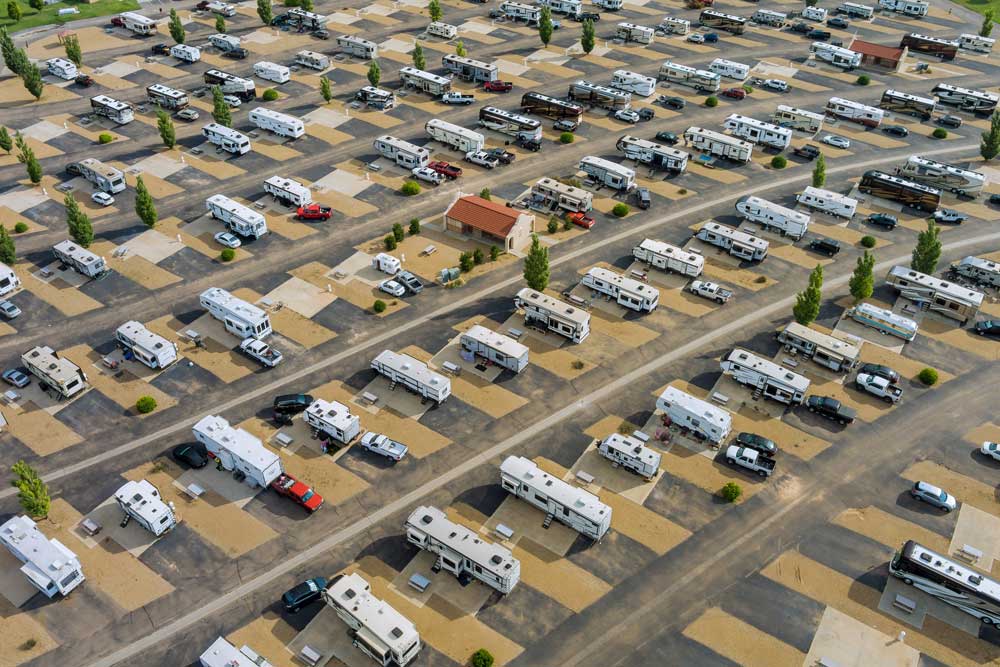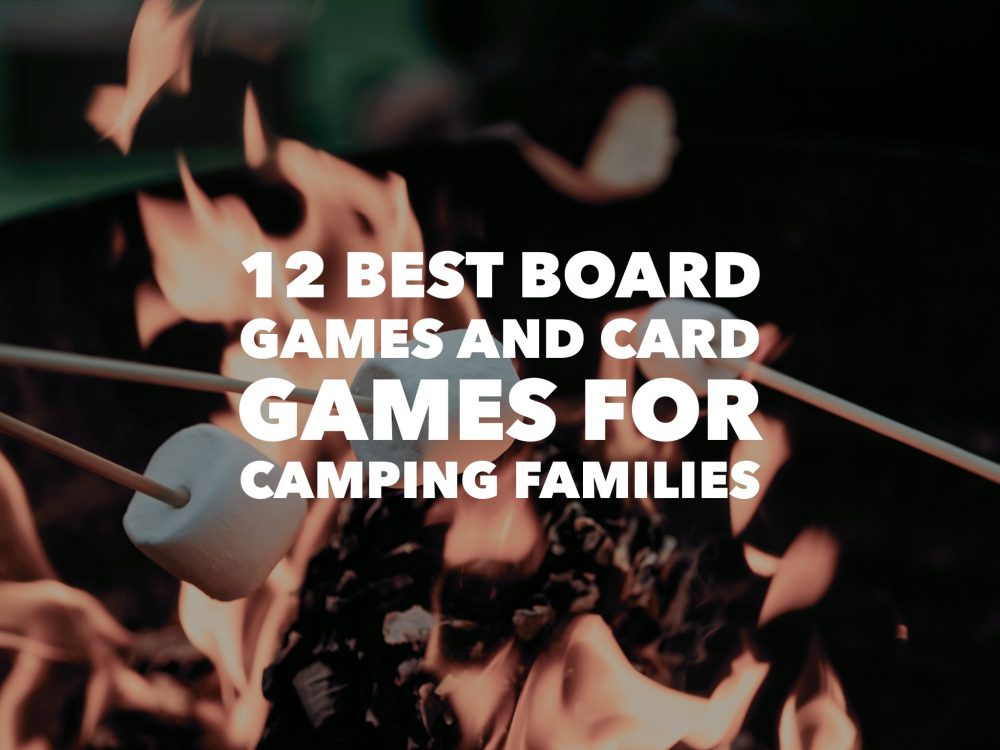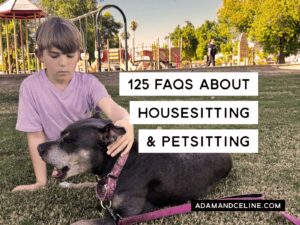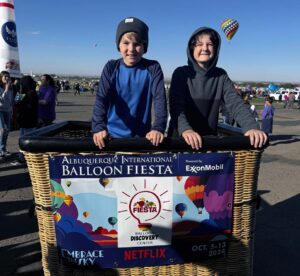So, you think you’re ready to take on RV Life! There’s nothing quite like hitting the open road with your favorite people (and plenty of new friends to meet), exploring nature’s wonders, and creating unforgettable memories.
(this blog post may contain affiliate links. We may earn a commission from making a referral at no cost to you.)
One of the most common questions we get from aspiring RVers is about how to choose an RV for your family. There might be a whole list of questions going through your mind right now:
-
Should we get a used RV or buy an new RV?
-
What do we look for when buying an RV used from RV trader?
-
What will RV insurance cost?
-
Is it worth visiting RV Dealerships when RV shopping? What about an RV show?
-
Travel Trailer? Fifth wheel? Class A Motorhome? Class C Motorhome (and what’s a Class B that we can’t often find at a dealership?)
-
What are the unexpected costs of RV ownership?
-
Is there an RV brand that’s better than others?
- Can you cook in an RV or do you have to eat s’mores and hotdogs all the time? (and do the kitchen appliances actually matter?)
BUT why should you trust us to provide RV advice? (The “Adam & Celine” RV story in super-speed)
-
We started RVing in 2018 with our 3 boys (4, 6, and 8 at the time).
-
In 2018, we bought a used 1992 Salem Cobra Travel Trailer. We had never RVed before, so we renovated it and traveled in it for almost two years.
-
We sold our first trailer and bought our second travel trailer in April 2020.
-
We’ve been to 42 states, across Canada 3 times, and down to Baja, Mexico on the west coast for 2 months.
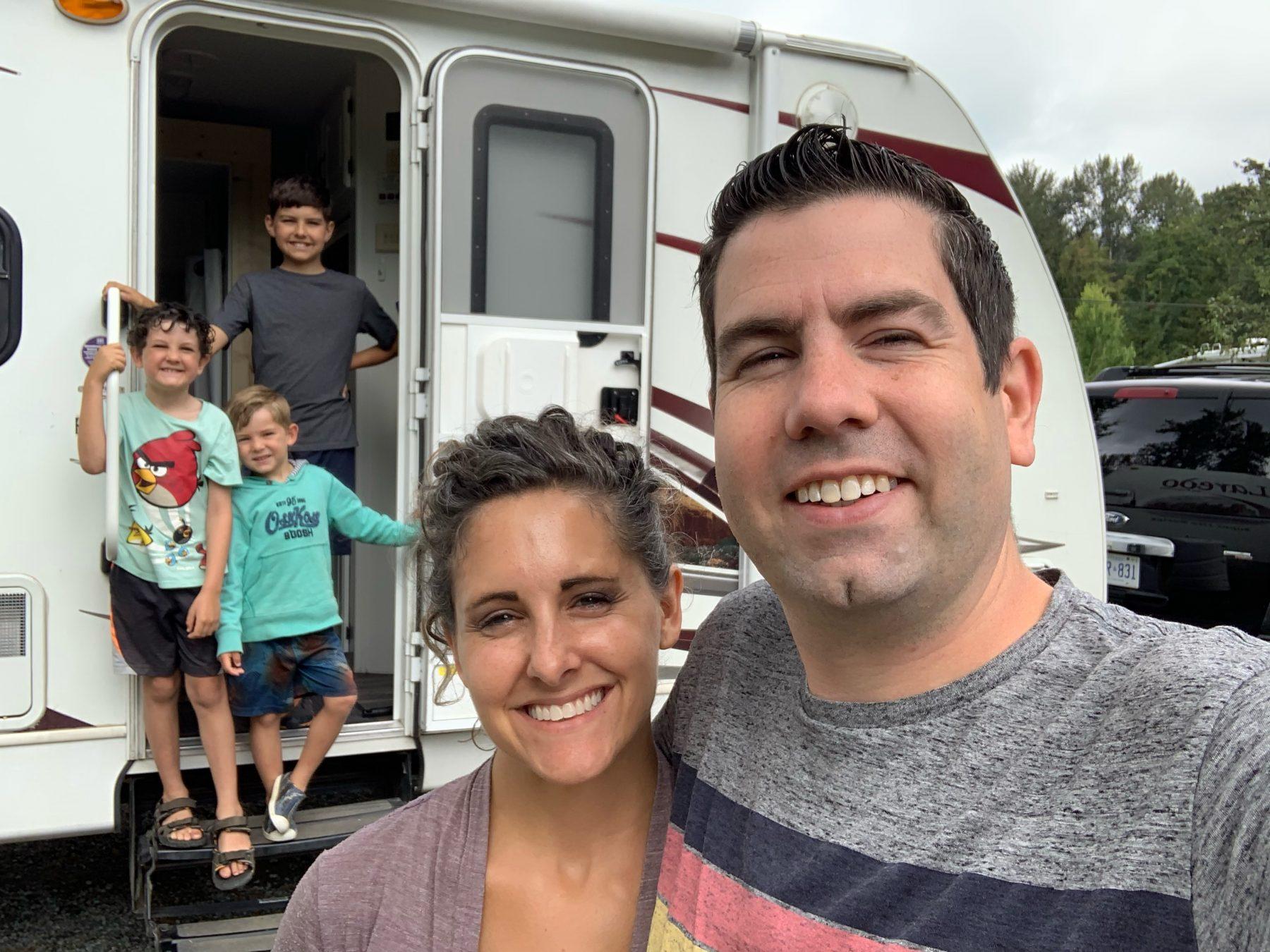
This is us! A full-time RVing family of 5
If you’re on Instagram, follow along with us on our family travels!
Here’s what to keep in mind when you’re buying your first RV:
-
Consider your family size, sleeping preferences, and travel frequency when choosing an RV.
-
Research different types of RVs to find the right fit for your budget & needs.
-
MOST RVers who decide to travel full-time say “We’ll try it for a year,” and see what happens.
-
TL;DR – Your first RV could be the most straightforward option that you can live in for a year. If you stay on the road after that, buy your second RV once you’ve figured out what you like about your current RV and what you might want to change.
In this article, I (Adam) will run through some of the variables of buying an RV. As you go, write down the points that are non-negotiable for your family, and that will help you narrow your RV search.
Before we dig into the details, we often suggest that someone who is considering getting an RV rents one first – do your homework and read the rest of the ideas below to decide which option your THINK would be best, then rent an RV for a week to help solidify your decision.
A platform like RVezy can help you try out an RV style before locking yourself in.

Consider renting an RV before buying your first RV
Buying Our First RV in 2018:
Here are the non-negotiables we had in mind for buying our first RV:
-
Pay in cash – no payments or lease agreements requiring a financial commitment beyond our 1-year commitment to RVing.
-
Individual beds for each of our 3 boys – some families are alright with having kids sleep on the dinette each night, or having younger kids share a double bed. We decided that we wanted us all to have our own private space. We found a trailer with 4 bunks, then removed one of the bottom bunks to give our kids some more floor space. We put up curtains for each bunk so our boys can climb into their bed and close a curtain if they need some alone time. They get to decorate and organize their bunks however they would like to (mostly with piles of stuffed animals and pokemon binders).
-
A separate space to close the boys into bed at night – Our first trailer had a pocket door so that after they went to bed, we could use the rest of the trailer space.
-
A towable weight for our Ford Expedition – We didn’t want to buy an RV and a replacement car, so the Ford Expedition we owned at the time was capable of towing 9,000 lbs, so our RV had to fit into that capacity. ALSO, since an expedition can’t tow a fifth wheel, we had narrowed down our search to a travel trailer.
Sum it up: We had a cash budget (including renovations), a travel trailer less than 9,000 lbs, at least 3 bunks for the kids, and a way to close off their bedroom at bedtime.
Buying our Second RV in 2020:
Since we had been on the road for almost two years, we knew what we would like to look for in our second RV. We had been to almost 200 campgrounds in 2 years, so we had seen lots of other RVs, visited some RV dealerships for fun, and got a general sense of what could be an improvement for us.
-
An outdoor kitchen – Some newer RVs have 3 bunks inside, and in the bottom bunk space, instead of a bottom bunk is an outdoor kitchen. We love garlic, onions, curry, and bacon, so an outdoor kitchen allows us to cook those strong smelling foods without getting our curtains, clothes, and bedding also smelling.
-
A slide out – since we were buying a newer RV than our original 1992, we would be getting an RV that was built with much lighter materials, which allowed us to add the weight of a slide out. An additional 36 sq ft might not sound like a lot of extra living space, but when you go from 240 sq ft to 276 sq ft, that’s a world of difference.
-
A spot for a designated office space – in our new RV, we removed the loveseat from the slide and put in a designated work space. This means I don’t have to clean up my work from the dinette every evening to have dinner.
-
Our Master bed is accessible from both sides – in our original RV, the master was tucked in a corner, so if I had to get up in the middle of the night, I had to crawl over Celine which would wake her up. In our new RV, we have pocket doors on either side of our bed so we can each get up without crawling over the other.
-
Pay in Cash – Second verse same as the first. We weren’t interested in getting into a payment. We want to flexibility to sell our RV however and whenever we decide to.
-
No leaks or warranty claims – You can take this one with a grain of salt. Some RVs that have had leaks are perfectly fine. Others have been patched up with bubble gum and bandaids then painted to hide the repair. We didn’t want to take that risk in any fashion. Could we have gotten a deal on a repaired RV? Sure, but we didn’t want to take any risks since this isn’t a weekend getaway, but our home.
-
Power EVERYTHING – Our first RV had a manual tongue jack, manual stabilizers, and manual awning, and for bonus points, you had to light the water heater manually. We wanted to have all of those things happen with a button this time around. If we moved once a month, then maybe that wouldn’t be as much of an issue, but since we like to keep going every 4 or 5 days, we wanted the additional convenience of power accessories.
With all of that in mind, let’s dig into the options and considerations you’re going to come across when buying an RV. Make a list of YOUR non-negotiables, and a second column of “nice-to-have”s and you’ll be well on your way to choosing the perfect rig for your RV adventure.
What Could We Look For In Our 3rd RV?
Good question! Since buying our 2nd RV, we’ve upgraded our tow vehicle. We used to drive a Ford Expedition SUV and have recently upgraded to a diesel Dodge Ram 2500 pickup, so we now have the option for a fifth wheel.
Our immediate hesitation to upgrade is that we’ve done a lot of work to get our travel trailer equipped with solar so we can go off-grid on free public land in Canada and the US and still have power. We wouldn’t want to give that up, so changing our rig would mean another solar install.
HOWEVER, upgrading to a fifth wheel would also mean we would have larger tanks (both fresh water and waste water) which would mean extending our time off-grid without having to refill or dump, possibly have a washer and dryer (or combo unit) in our RV to save on trips to the laundromat. It would give us a larger living space with higher ceilings and more storage in the ‘garage’ under the RV.
Additional slideouts would also give us more living space and be within the tow capacity of our diesel pickup.
We still wouldn’t compromise that each of our boys has their own bed space, and we still need to be able to cook outdoors.
Determining Your Family’s RV Needs
Choosing the right RV isn’t just about the sleek design or the brand name. It’s about finding a vehicle that’s well-suited for your family’s unique needs and lifestyle. And to make that decision, you need to consider a few factors.
Consider the size of your family first. Whether you’re a family of five (like us), a larger family, or a couple looking for some quality time, your RV needs to accommodate everyone comfortably. Sleeping arrangements are an important consideration.
You want to ensure that there is enough space for everyone to catch a good night’s sleep after a day filled with adventures. And trust us, nothing can replace a good night’s sleep on the road!
Family Size and Sleeping Arrangements
The number of people in your family and their sleeping preferences can greatly influence your RV choice. Here are some factors to consider:
-
For larger families, RVs with bunk beds (often called a bunkhouse) or multiple bedrooms might be the way to go. Multiple bedrooms? Yes! In a towable trailer or fifth wheel, you can have a bedroom at each end of your RV. In a motorhome, you might have a bed over the cab, or you might only have a bedroom at the back of the rig.
-
If you’re a couple, a smaller RV with a comfortable double bed could be all you need. Don’t skimp here. If you NEED an king bed, get an RV with a king bed. Retrofitting a space for a double to fit a king when you change your mind in 3 months is going to be a challenge.
-
Don’t forget about storage space! From camping gear to RV covers, to personal belongings, you need enough room to pack your life on wheels. Make a list of what you have to bring with you – folding chairs, a propane fire pit, wheel chocks, an outdoor rug, and your fishing pole might all need to have a place in your storage. Multiply chairs and fishing poles by 5, and our our storage requirements are much more than a smaller family.

What should you look for when buying your RV? Depends how you’re planning to use it!
Travel Frequency and Duration
How often and for how long you plan to travel in your RV can also impact your choice. If you plan to become full-time RVers, a larger RV might be a better option than a smaller space. On the other hand, if you’re looking at occasional weekend getaways, a smaller and simpler RV might do the trick.
You’ll also want to consider your travel frequency and how much setup you’re going to do at every stop. We have some friends that setup an outdoor workspace clam tent at every stop, even if just staying for a couple nights. They also setup their starlink satellite for internet, a propane fire, an outdoor carpet, a mosquito net around their awning, and some outdoor lighting to set the atmosphere.
For other friends, it doesn’t matter if they’re staying for a day or a month; they set up their satellite internet and a couple of folding chairs, and that’s it.
If you’re going to be moving frequently, then a motorhome is easiest to just pull in your lawn chairs and start driving. A towable (whether a fifth wheel or a travel trailer) takes longer to hitch up.
If you’re traveling less frequently (but plan for longer road trips), then a motorhome is a great option since your family can be in their bed, on the couch, or at the dinette while you’re driving. (Laws and restrictions change state-by-state – some have different requirements for driving. Some will allow passengers in a towable RV, but we don’t ever take that risk; we simply all ride in our towing vehicle’s cab).
Hobbies and Activities
Your family’s hobbies and activities can also dictate the type of RV you should choose for your RV adventures. If you’re a family of outdoor enthusiasts, you might need an RV with additional storage space for your kayaks, atvs, or dirt bikes. On the other hand, if you’re more into relaxing and enjoying the great indoors, an RV with comfortable seating and entertainment options for guests might be a better fit.
Your RV should complement your lifestyle, not complicate it.
Will you tow your RV or choose a motorhome?
Having identified your needs, let’s move on to understanding the two primary categories of RVs – towables and motorhomes. Each has its unique benefits and drawbacks, and the choice largely depends on your personal preferences and requirements.
Towable RVs, like travel trailers and fifth wheels, have several advantages:
-
They are typically cheaper upfront
-
They can be towed by a separate vehicle
-
You can set up camp and still have a vehicle to drive around for local errands or sightseeing
However, keep in mind that you need a suitable tow vehicle with a good towing capacity. Backing in a trailer with a pivot point is a bit of a learning curve compared to backing in a motorhome, which works on the same principle as backing in your car.
Motorhomes are more expensive (and require more maintenance from fluids, to transmission, oil changes, etc) but offer more creature comforts. They are especially ideal for longer journeys, as they provide more living space and amenities and allow your family to travel in and around the motorhome instead of being in a seat in your town vehicle.
Exploring Different Types of Family RVs
The variety of RVs on the market might make finding the perfect fit for your family appear challenging. From travel trailers to motorhomes, each type has its unique advantages, catering to different needs.
If you’re thinking about a towable RV, start by figuring out your current vehicle’s towing capacity. (a quick Google search of the year, make and model should help you find the town capacity.) The last thing you want is a great new RV that your current vehicle can’t handle.
For motorhomes, you’d want to consider factors like fuel efficiency, maintenance costs, and the amount of living space.
Either way, here are some of our best tips to maximize storage space in an RV
Travel Trailers (like ours) – Sometimes called a “Bumper Pull Camper”
Due to their versatility, travel trailers (or bumper pulls) are a popular choice among families (and what we’ve settled on for both our first and second RV). They come in various sizes and configurations, offering something for every family. From compact models perfect for couples to larger ones with bunk beds for families, a travel trailer covers a wide spectrum.
Their affordability and the ability to be towed by various vehicles add to their appeal.

Our travel trailer parked at a campground in Mexico
Fifth Wheels
Fifth wheels are the next step up in terms of space and comfort. They offer more living space and tend to have more luxurious features. Their unique design provides a separate bedroom area (usually the part that goes above the truck bed), which can be an advantage for families seeking privacy.
However, keep in mind that fifth wheels require a special in-bed hitch to tow, and require a pickup truck. Because of the extra size of a fifth wheel, they usually require a larger style of pickup, so check the towing capacity of your pickup before shopping for fifth wheels.
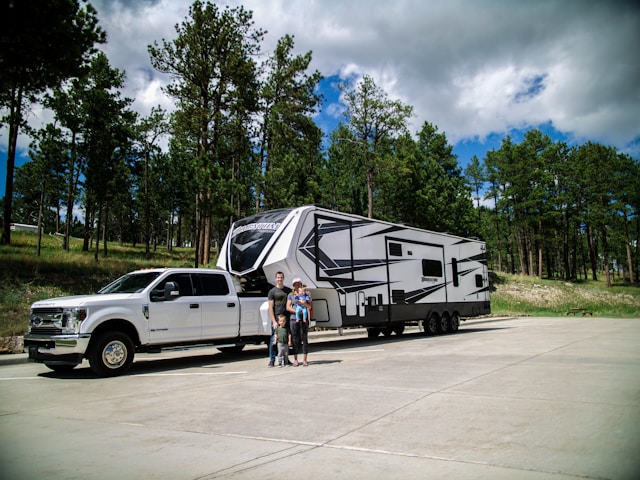
A fifth wheel RV offers plenty of space, but requires a heavy duty pickup truck
Pop up campers
We don’t recommend a popup camper for full-time RV life. They’re inexpensive and light, which makes them appealing for towing with a small vehicle, but with a top that pops up and beds that fold out, there’s not much storage, no privacy, no onboard toilet or shower, and very little storage space.
If you’re hoping for air conditioning from time-to-time, a soft sided camper won’t offer the insulation necessary to keep the humidity out.
They’re fine for a weekend away (where you’re just needing a bed with a mosquito net and are happy to spend the rest of your time in the great outdoors) but there’s not much more that this type of RV offers. While I’m sure people have done it, this is not the RVing lifestyle most people are after.
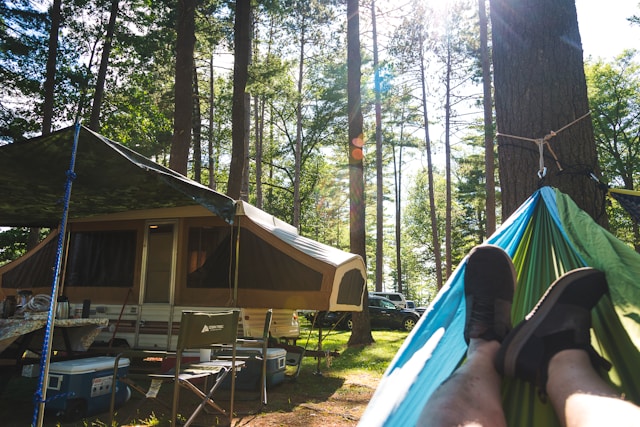
A popup camper is light and can fit in small spaces, but not very functional for full-time RV living
Class A Motorhomes
Class A motorhomes are the largest and most luxurious of the RV types. They’re easy to recognize because they look like a flat-nosed coach bus with a large windshield. They offer ample living space, large kitchens and bathrooms, and often come with high-end features like flat-screen TVs and premium appliances. However, their size can make them challenging to drive and park, and they tend to be the most expensive to buy and maintain.
If you have a goal of camping in National Parks, then you’ll want to check the length of the parks you want to visit. Some National Parks don’t accommodate RVs of certain lengths (but there are often RV park or campgrounds near the National Park entrances that are happy to accommodate).

This is an example of a Class A Motorhome with a large windshield and a flat nose
Class B Motorhomes
Class B motorhomes are the smallest and easiest to manage, often called camper vans or sprinter vans. Think of an Amazon delivery truck with a sloped nose and flat sides. Volkswagen vans also fit in the Class B Motorhome category.

A classic Volkswagen Van is an example of a Class B Motorhome
They are perfect for couples or and some might accommodate small families (this is debatable) who value mobility and simplicity over space. While they lack the room of larger RVs, their smaller size makes them easier to drive and park, especially in cities or crowded campgrounds. In comparison to truck campers, Class B motorhomes offer a more compact and maneuverable option.

A sprinter Van is a Class B motorhome
Class C Motorhomes
Class C motorhomes offer a balance between the size and amenities of Class A motorhomes and the maneuverability of Class B motorhomes. They typically have a distinct cab-over profile that provides extra sleeping or storage space above the cab and a separate bedroom at the back.
Class C motorhomes are a popular choice for families, as they offer a good balance of space, features, and drivability.

Class C Motorhomes are a great balance between size and space, often including a bed over the cab
School Bus Conversions (Schoolies)
School bus conversions (often referred to as Schoolies or Skoolies) deserve an honorable mention here as they are picking up popularity, but unless you’re looking to convert one yourself, we wouldn’t recommend buying a schoolie for your first RV.
Unlike a brand-new RV, there’s too much custom work that goes into building a schoolie for a standard Google search or a browse through an RV forum to be of much help if you need to troubleshoot a problem.
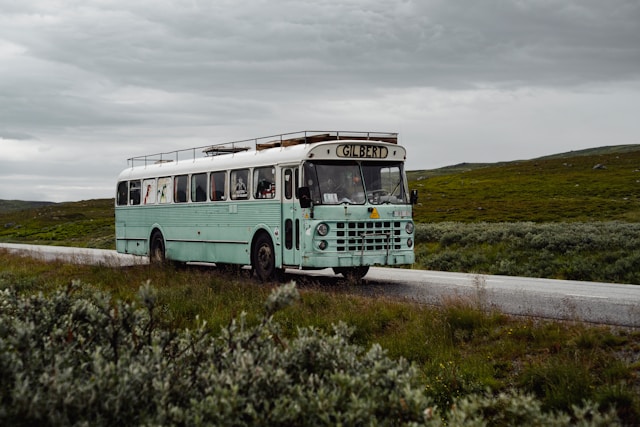
School bus conversions (often called Schoolies) are very cool to check out, but not recommended for a first-time RVer
Budget Considerations
The ideal RV for your family isn’t merely about the right features and size. It also needs to fit your budget. When planning your RV purchase, it’s important to consider the upfront costs and ongoing expenses.
This includes the price of the RV itself, whether new or used, the cost of financing the purchase, and the ongoing costs like insurance, maintenance, and storage (if you’re spending a month with family for Christmas or need to pay for storage since you can’t park your RV in your driveway.
Remember that the cheapest RV is rarely the best value. Consider the RV’s condition, features, and how much storage space you’ll need to fit your needs.
Side note: When you consider your ongoing RVing budget, campgrounds will likely be one of your biggest expenses. Here’s how we cut our campground costs in half our second year on the road.
New vs. Used RVs
When buying an RV, considering a new RV can be very appealing. You get to choose the exact model, features, and layout you want, and you have the peace of mind that comes with a manufacturer’s warranty. However, like a new car, new RVs can be expensive and depreciate quickly.
On the other hand, a new or used RV can be a great option, as used RVs are more affordable and can offer great value. Just be sure to thoroughly inspect a used RV for any potential issues before purchasing. Search for an RV inspector in your area (like a home inspector) to find the things that you may not see.
As a general rule of thumb, a used RV between 5-8 years old is the best value with the least likelihood of needing maintenance repairs in the next few years. RVs younger than 5 years can still get hit with some significant depreciation. RVs older than ten years can start to need major repairs if they haven’t been maintained well.
Financing Options
Unless you plan to pay cash for your RV, you’ll likely need to look into financing options like RV loans. Many dealerships offer financing, or you can look for a loan from a bank or credit union. Consider the interest rate, loan term, potential hidden fees, down payment, and monthly payment amount to ensure it fits within your budget.
It’s also important to remember that while a longer-term loan might offer lower monthly payments, it could end up costing you more in interest over the life of the loan or make it more difficult if your RV situation changes and you need to sell or re-assign the lease.
Ongoing Costs
In addition to the upfront cost of purchasing the RV, it’s important to consider the ongoing costs. This includes insurance, regular maintenance, and potentially storage fees if you don’t have space to store the RV at your home.
It’s also important to factor in the cost of gas (or diesel), as RVs are not known for their fuel efficiency. These costs can add up quickly, so be sure to factor them into your budget.
If you’re up for the challenge (and the benefits) you might check out some free camping options to help your budget stretch a bit further.
Test Driving and Renting RVs
Prior to making a purchase decision, take your motorhome for a test drive. This can give you a feel for how the RV handles and whether it fits your family comfortably. Try to drive in a variety of conditions, including highways, city streets, and parking lots.
Another excellent approach is to rent an RV. 48 hours in that rig and you’ll know if you want to make adjustments to your “must have” list. Renting allows you to experience what it’s like to live and travel in an RV without the long-term commitment. Just like test driving, renting can help you determine what features and size are right for your family.
Test Drive Experience
Taking a potential motorhome for a test drive is an essential step in the buying process. Not only does it let you check the performance and handling of the RV, but it also gives you a chance to experience the comfort and features from a user’s perspective. Remember to check everything from:
-
the comfort of the driver’s seat
-
the functionality of the kitchen appliances
-
the condition of the tires
-
the responsiveness of the brakes
-
the visibility from the mirrors
-
any noises that might be a concern
Renting Options
Renting an RV can be a fantastic way to get a feel for the RV lifestyle without making a big commitment. Here are some benefits of renting an RV:
-
You can rent different types of RVs to see which one you prefer
-
You can try out different sizes to see what feels most comfortable
-
Renting gives you the chance to practice driving and parking an RV before you buy one
Many companies offer RV rentals, so you’re sure to find one that suits your needs and budget. We’ve heard good things about renting an RV from RVezy but we’ve never rented an RV, so be sure to ask lots of questions and do you homework.
While you’re at the campground where you’ve taken your RV rental, ask other people there what they like about their rig. Many RV owners are happy to share their experiences and can give insight into why they chose their RV and what they might choose differently next time.
(We often get asked about how often we use our outdoor kitchen, for instance. While it’s not an uncommon feature, it’s not something that’s standard on every RV)

We use our outdoor kitchen for cooking outside on hot days and for things that smell amazing (like onions and bacon) but don’t smell amazing on your sheets, towels, and curtains inside.
Research and Community Resources
In your search for the ideal family RV, conducting thorough research is key. There’s a wealth of information available online, from RV manufacturers and dealerships to blogs (like this one – register for our newsletter with tips and tricks for family travel and RV life) and forums where RV owners share their experiences and advice. This research can help you learn about the pros and cons of different RV types, understand common issues and maintenance tips for specific RV types or models, and get a sense of the costs involved in RV ownership.
Besides online resources, visit an RV show or an RV dealership. This can give you the opportunity to explore a variety of RVs in person, ask questions, and get a feel for what you like and don’t like. You might find interesting features you didn’t even know existed (like our second RV has an outdoor kitchen, and a TV that rotates 180 degrees so it can be watched in either the master bedroom or the living space.)
Ask lots of questions – the more you know, the better equipped you’ll be to make a smart decision.
Online Forums and Blogs
Online forums and blogs have plenty of information and advice from fellow RVers. You can find discussions on everything from the best RV models for families, to maintenance tips, to recommendations for the best RV parks and campgrounds. You can also ask your own questions and get advice from experienced RVers.
Join our Facebook group for RVing families here.
RV Shows and Dealerships
RV shows and dealerships are another valuable resource in your RV search, as they provide a glimpse into the ever-evolving RV market.
-
You can explore a variety of RVs from different manufacturers all in one place.
-
You can walk through different models, compare features and prices.
-
You can attend seminars and workshops to learn more about RVing.
Dealerships offer the opportunity to:
-
Speak with knowledgeable salespeople
-
Ask specific questions
-
Test drive different models
-
Provide information about financing options and warranties.
Safety and Legal Considerations
Safety and legal considerations should also form an integral part of your checklist when selecting the right RV for your family. Be sure to understand the weight limits of your RV and tow vehicle if applicable, and always adhere to these limits for safe travel. You’ll also need to ensure you have adequate RV insurance to cover any potential damages or accidents.
Lastly, be aware of any state-specific laws or regulations that may apply to RVs, such as size restrictions or required equipment.
Choosing the Right Floorplan and Features
The floorplan and features of an RV can significantly influence your level of comfort and enjoyment. Think about your family’s needs and lifestyle. Some considerations to keep in mind are:
-
If you enjoy cooking, a large kitchen with a spacious refrigerator and ample counter space might be a priority.
-
If you plan to spend a lot of time indoors, a comfortable seating area with a good entertainment system could be important.
-
Don’t forget about the sleeping arrangements – make sure there’s a comfortable bed for every family member!
Pre-Purchase Inspections and Warranties
Conducting a pre-purchase inspection is advisable before you finalize your RV purchase, especially from a private seller. Search for a Recreation Vehicle Industry Association (RVIA) certified inspector. This can help identify any potential issues or repairs that may need to be addressed. Here are some areas to check:
-
Engine
-
Electrical systems
-
Plumbing
-
Tire age
-
Roof
-
Water damage or stains on floor or walls
Also, consider the warranties offered with the RV. A good warranty can provide peace of mind and protect you from costly future repairs.
To sum up how to choose an RV:
Choosing the right family RV is a journey that involves careful consideration of your family’s needs, budget, and lifestyle.
Whether you opt for a compact travel trailer or a luxurious motorhome, finding an RV that fits your family’s needs and offers a comfortable and enjoyable living space is key. With thorough research, careful planning, and patience, you can find the perfect RV for your family’s adventures.
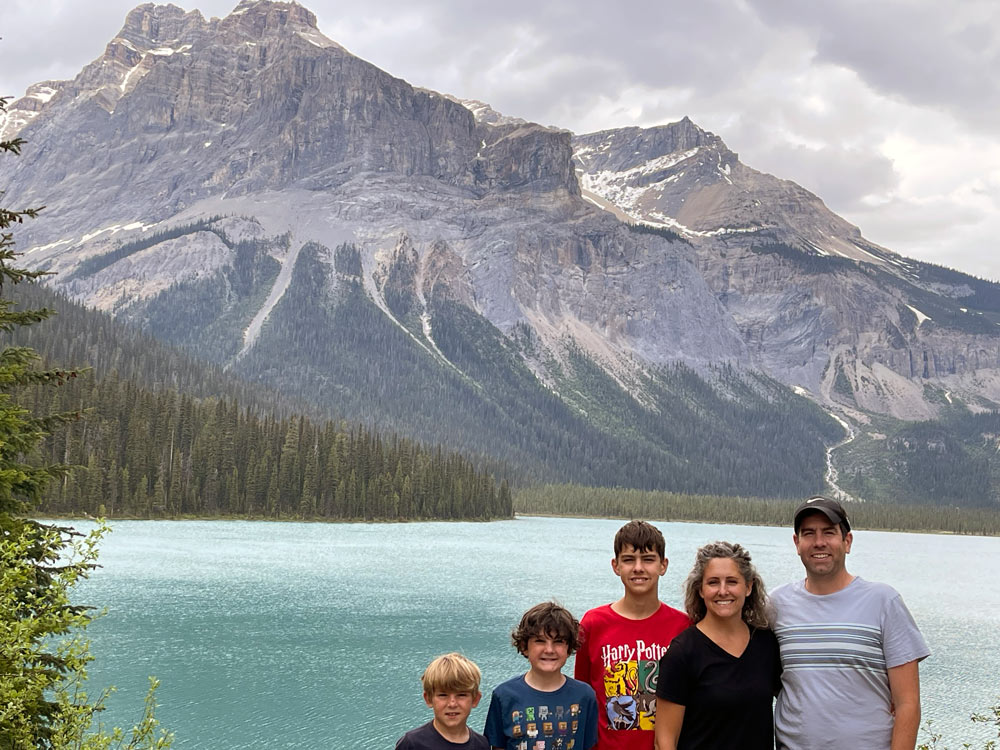
Frequently Asked Questions
Have you heard of the 3 3 3 rule for RV living? (We think it’s bogus)
The 3-3-3 Rule of RV Travel is a set of guidelines for how you can structure your travel for maximum enjoyment – drive no more than 300 miles per day, camp at every campground for three nights and arrive by 3 PM. Most people in the RV community don’t even consider this idea.
Ha – just live your RV life the way you want to. Plan out a couple weeks and see how much you enjoy traveling, staying, and the frequency that you’re ready to move on. From there, you’ll start to get a feel for what’s best for your family.
We do have a general rule that for every hour we drive, we like to stay a night – a 4-hour drive means we would stay for 4 nights – but that’s a general rule of thumb that we only stick to 80% of the time.
What is the best RV setup for a family?
For large families, a towable like a toy hauler, travel trailer, or fifth-wheel trailer is the best RV setup. Towable vehicles allow you the option for bedrooms at both ends of the RV (unlike a motorhome that may have a bed over the cab, but not a bedroom). These options offer more flexibility and space than other RVs, and can even be divided with doors into separate zones with multiple slide-outs.
What not to do when buying an RV?
Don’t buy on impulse, overspend, avoid pre-owned RVs, forget to research different types, or overlook key features and your needs when buying an RV.
What are the most important factors to consider when choosing a family RV?
When selecting a family RV, size, travel frequency, hobbies, budget, and tow vs motorhome are all important factors to consider. Do you best to figure out which type will be the best fit for you, then rent an RV and try it out for a weekend or a week. You might also then rent an RV style that you don’t think will be a fit just to confirm your choice. Click here to check out RV rental options from RVezy.
Are there different types of RVs to choose from?
Yes, there are many types of RVs to choose from, such as travel trailers, fifth wheels, and Class A, B, and C motorhomes, each offering its own features and advantages.

